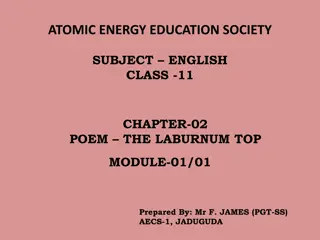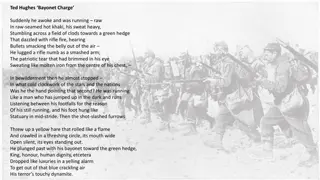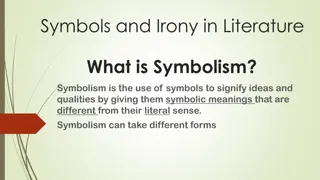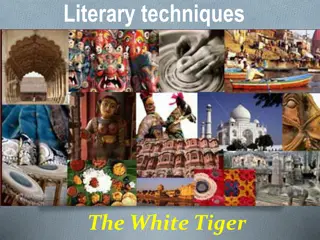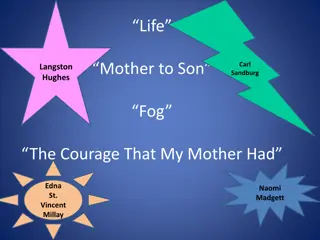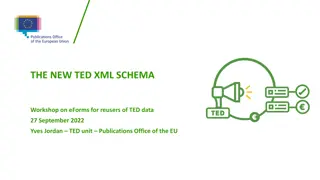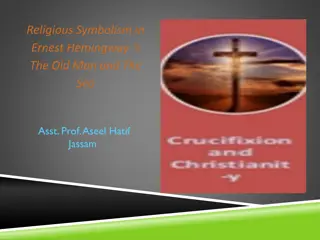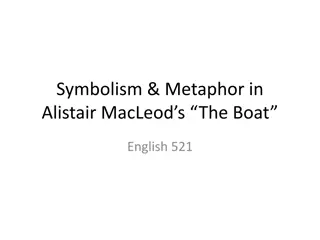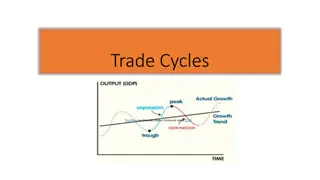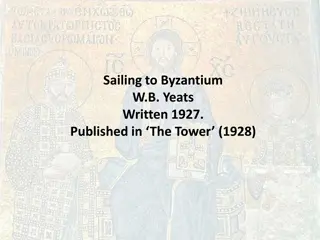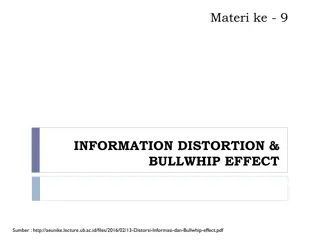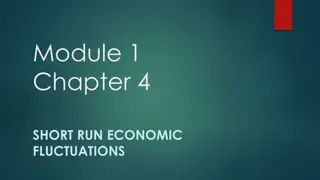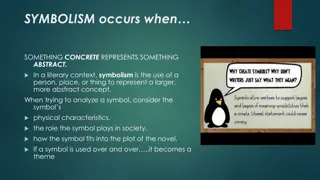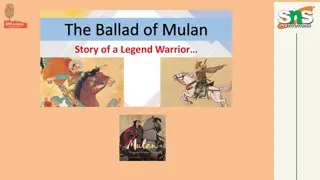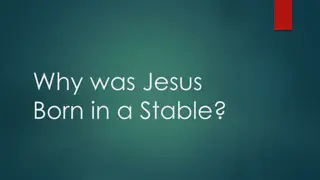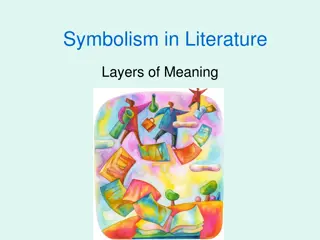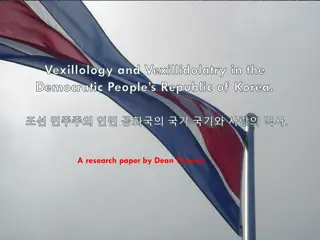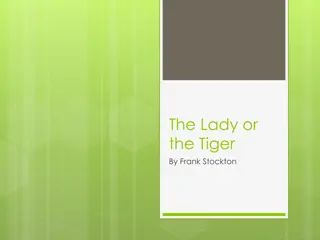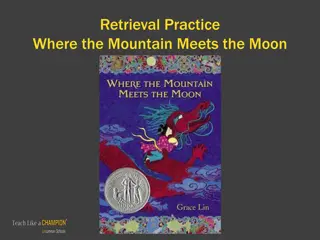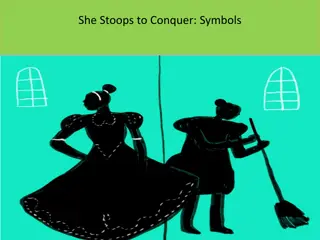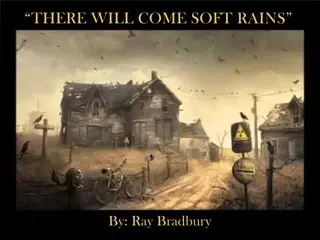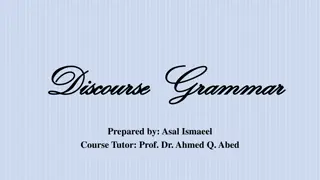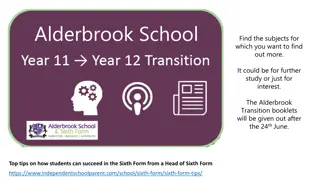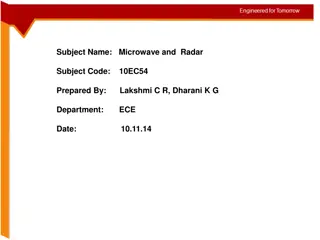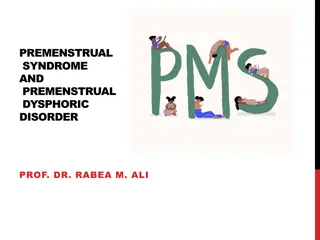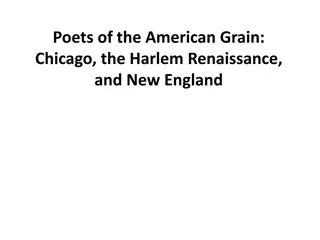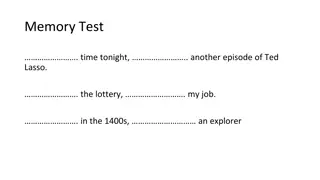The Laburnum Top by Ted Hughes - Symbolism of Life and Fluctuations
The Laburnum Top by Ted Hughes portrays the relationship between a Laburnum tree and goldfinches as a symbol of life's fluctuations. The poem explores how the visit of a goldfinch transforms the tree, bringing it to life with the chirping of her chicks. Through vivid imagery, Hughes highlights the impact of one small creature in breaking the monotony of life, emphasizing the significance of attitude in finding meaning and vitality.
Download Presentation

Please find below an Image/Link to download the presentation.
The content on the website is provided AS IS for your information and personal use only. It may not be sold, licensed, or shared on other websites without obtaining consent from the author. Download presentation by click this link. If you encounter any issues during the download, it is possible that the publisher has removed the file from their server.
E N D
Presentation Transcript
THE LABURNUM TOP By Ted Hughes
Author Name Ted Hughes Born 17 August 1930, Mytholmroyd, United Kingdom Died 28 October 1998, North Tawton, United Kingdom Education Pembroke College, University of Cambridge Spouse Carol Orchard (m. 1970 1998), Sylvia Plath (m. 1956 1963) Costa Book of the Year, Guggenheim Fellowship for Creative Arts, US & Canada, Guardian Children s Fiction Prize Awards
Introduction The poem The Laburnum Top is a beautiful poem in which the poet has used the Laburnum Tree and goldfinches as a symbol of life and its fluctuations. In this poem, the poet describes how the visit of a goldfinch changes the Laburnum tree. The goldfinch transforms the tree and makes it come alive as the chicks of the goldfinch start to rustle and chirp on seeing her. Once the goldfinch leaves the tree, it becomes quiet and still again. The Laburnum tree symbolises the pattern of our life in general, which is usually dull and inanimate. The goldfinch breaks the usual pattern and makes it lively. Without the goldfinch, the Laburnum tree is just like another tree. In other words, it is the attitude of a person towards life that makes life meaningful and worth living.
Vocabulary goldfinch a small, yellow bird twitching a small, often involuntary movement of the body chirrup the sound made by a bird startlement amazement sleek smooth abrupt suddenly chittering sound made by baby birds tremor shaking trilling to sing a series of quickly repeated high notes trembles and thrills shakes violently the engine of her family the goldfinch stokes adds fuel (here the goldfinch is feeding her chicks) flirts moves abruptly or jerkily with light steps barred striped
Explanation The poet describes a beautiful sunny autumn. The Laburnum tree is silent and still. It is laden with yellow leaves and yellow flowers in September. Its leaves have turned yellow because of the autumn season and all its seeds have fallen. Just then a goldfinch alights on the Laburnum tree making short, high-pitched sounds. The goldfinch has her nest in the tree and her chicks are resting in the nest. On the mother s return, a sudden movement stirs the tree. Her little ones are excited on her arrival and start chirruping. The cautious mother enters the tree with great care so that no predator can come to know that her babies are housed in the nest.
The poet has compared the alert, abrupt and sleek movement of the goldfinch with that of a lizard. The goldfinch has been called the engine of her family. Just as the engine starts up the machine, her arrival in the nest has suddenly started up the silent machine (nest) i.e. the young ones have started chittering and making noise. By feeding her young ones, she has added fuel to the machine and as a result the chicks now have the erergy to be active and make noise. After feeding her chicks, the goldfinch flies up and rests on the end of a branch of the tree, her identity concealed behind the yellow flowers and yellowing leaves. After some time, the goldfinch makes a strange short, high-pitched sound. Then she flies away towards the infinite sky. The Laburnum tree becomes silent again after the departure of the goldfinch and everything seems to be the same as it was before the arrival of the goldfinch.
Poetic Devices Used in Poem Simile Simile: : In this figure of speech, one thing is compared to another. An example of simile in this poem is sleek as a lizard . Metaphor Metaphor: : In this figure of speech, a word/ phrase is used to represent something else. Examples of metaphor in this poem are engine of her family , where engine represents the mother goldfinch, and machine which represents the nest with its brood of bird chicks. Alliteration Alliteration: : In this figure of speech, a number of words having the same first consonant sound occur close together in a series. Examples of alliteration in this poem are September sunlight , A suddenness, a startlement , and alert and abrupt and tree trembles and thrills .
Onomatopoeia Onomatopoeia: : In this figure of speech, a word is formed from a sound similar to it. Examples of onomatopoeia in this poem are twitching chirrup , chitterings , trillings and whistle-chirrup . Transferred Transferred Epithet to a character or event but is used to describe a different situation or character Her barred face identity mask is an example of transferred epithet in this poem. The flowers of the Laburnum tree fall like bars and, when the bird sits behind the flowers, the shadow of the flowers on her face looks like she is wearing a mask that has bars on it. Epithet: : A transferred epithet is a 1 description which refers


